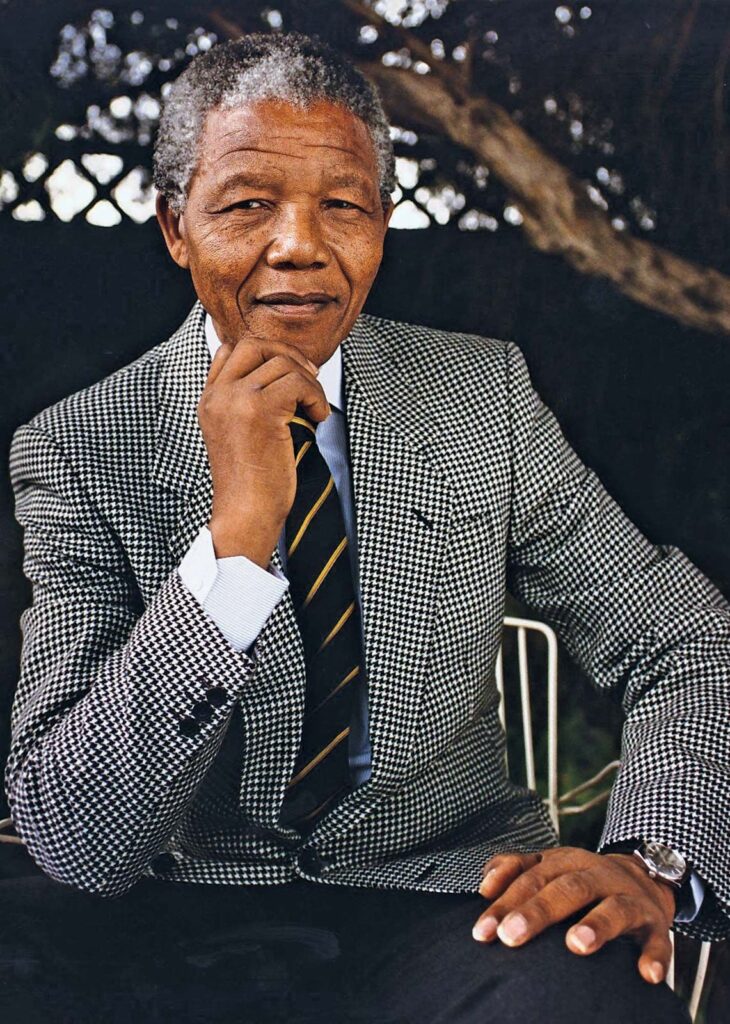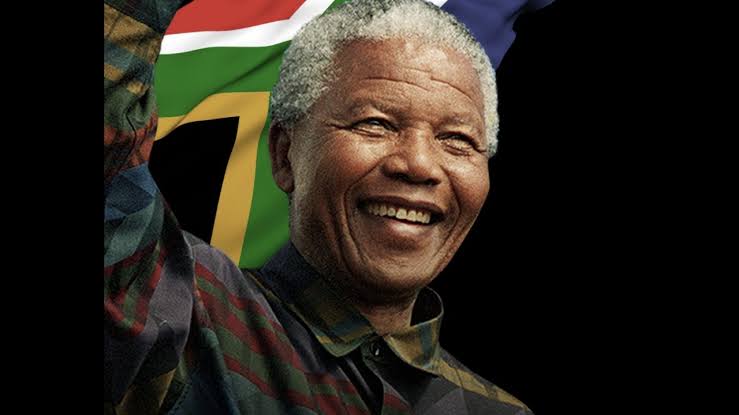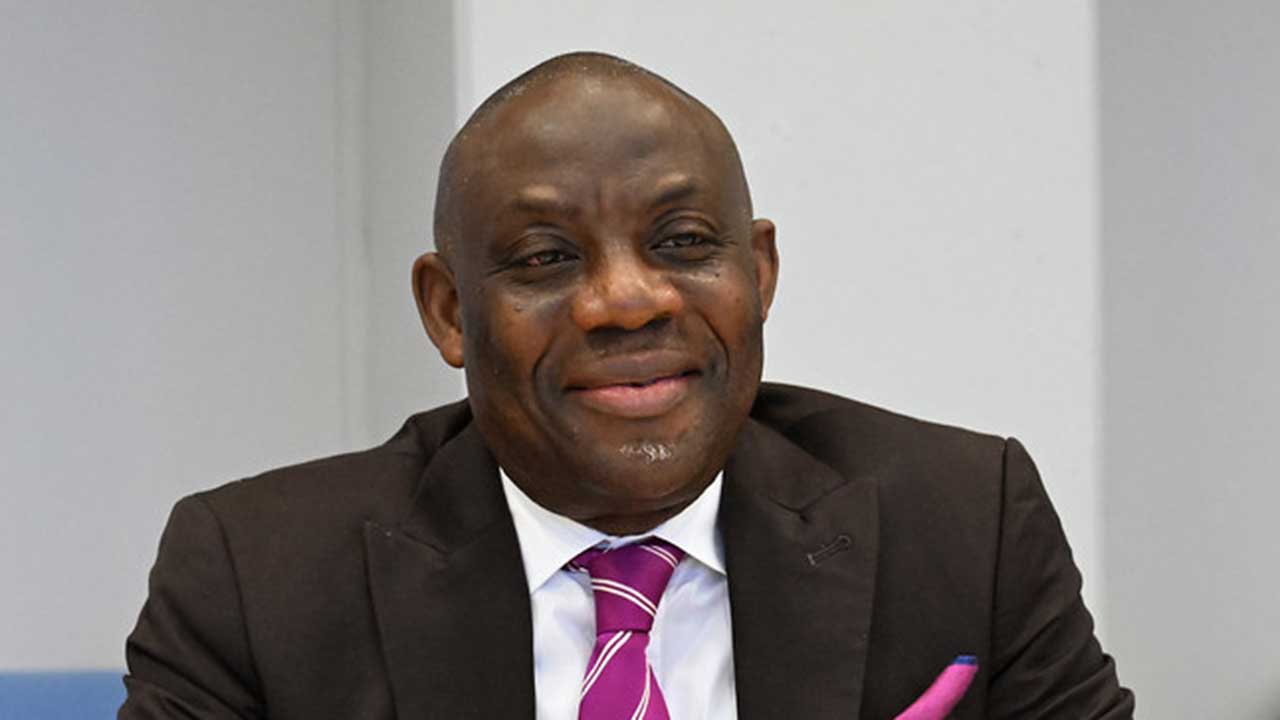Nelson Rolihlahla Mandela, born on July 18, 1918, in Mvezo, South Africa, was a transformative leader in the fight against apartheid and the first Black president of South Africa. His life and legacy are a testament to his relentless pursuit of justice and equality.
Mandela was born into the Madiba clan of the Xhosa-speaking Tembu people. His father, Chief Henry Mandela, was a respected leader, and after his death, young Nelson was raised by Jongintaba, the regent of the Tembu. From a young age, Mandela was groomed to assume a leadership role within his community, but he chose a different path. He renounced his claim to the chieftainship to pursue a career in law. Mandela attended the University of Fort Hare, the only institution at the time offering Western-style education to South African blacks, where he studied English, anthropology, politics, and law. His involvement in a student protest led to his expulsion, but he later completed his degree at the University of South Africa.
In 1941, Mandela moved to Johannesburg, where he began working as a law clerk with Walter Sisulu, a prominent ANC member. It was in Johannesburg that Mandela was first exposed to the harsh realities of racial segregation. In 1944, Mandela joined the African National Congress (ANC) and played a crucial role in forming the ANC Youth League (ANCYL). His leadership grew stronger, and by 1947, he was elected to the ANC Executive Committee.
The 1948 election of the National Party marked the beginning of apartheid, a system of racial segregation that further entrenched white minority rule and deprived non-whites of basic rights. Mandela’s commitment to ending apartheid deepened, and by 1952, he was leading the ANC Youth League and had gained considerable attention from the South African government. This period saw Mandela face increasing restrictions, including a banning order that severely limited his freedom of speech and movement.
Mandela’s activism continued unabated. In 1952, he, along with Oliver Tambo, established South Africa’s first Black law practice, focusing on cases affected by apartheid legislation. The same year, Mandela spearheaded the Campaign for the Defiance of Unjust Laws, which marked the first large-scale, multi-racial political mobilization against apartheid laws. This campaign, along with his work in the legal field, established Mandela as a formidable opponent of the regime.

In December 1956, Mandela was arrested with over 100 other activists on charges of high treason. The Treason Trials, which dragged on for nearly five years, ended with their acquittal in 1961. During this time, Mandela married Winnie Madikizela, and they had two daughters, Zenani and Zindzi.
Mandela’s activism intensified after the Sharpeville massacre on March 21, 1960, where police killed 69 unarmed Black South Africans protesting the pass laws. The ANC was subsequently banned, and Mandela went underground, adopting the alias “Black Pimpernel” to evade capture. In 1961, he co-founded Umkhonto we Sizwe (MK), the military wing of the ANC, which began conducting acts of sabotage against the apartheid regime.
Mandela was arrested in 1962 and sentenced to five years in prison for incitement to strike and leaving the country without official documents. His imprisonment marked the beginning of a prolonged period of incarceration. In October 1963, Mandela and other leaders of MK were tried in the Rivonia Trial for sabotage and attempts to overthrow the state. Mandela’s speech from the dock, which declared he was prepared to die for a democratic South Africa, garnered international acclaim. On June 12, 1964, Mandela was sentenced to life imprisonment, narrowly avoiding the death penalty.
Mandela spent 18 of his 27 years in prison on Robben Island, followed by periods in Pollsmoor and Victor Verster Prisons. During his incarceration, Mandela endured harsh conditions and limited contact with the outside world. He was initially classified as a “D” prisoner, receiving minimal privileges, and was assigned to labor in the prison’s lime quarry, where the work was arduous and hazardous.
Despite these conditions, Mandela’s resolve remained unshaken. He refused to accept offers of conditional freedom that would have compromised his principles, including one in 1976 that required him to recognize the controversial status of the Transkei Bantustan. Mandela continued to be a symbol of resistance against apartheid, and his imprisonment became a cause célèbre globally, drawing widespread support and condemnation of the South African regime.
On February 11, 1990, Nelson Mandela was released from prison, marking the beginning of a new era for South Africa. His release came after years of negotiations with President F.W. de Klerk, who had begun dismantling apartheid laws. Mandela was immediately chosen as deputy president of the ANC, and he became president of the party in July 1991.
In April 1994, under Mandela’s leadership, the ANC won South Africa’s first multiracial elections. Mandela was inaugurated as president on May 10, 1994, in a historic ceremony attended by leaders from around the world. His presidency was marked by efforts to rebuild South Africa’s fractured economy, address the legacy of apartheid, and promote national reconciliation. One of his notable achievements was the establishment of the Truth and Reconciliation Commission (TRC), which investigated human rights violations under apartheid.
Mandela also oversaw the enactment of a new democratic constitution in 1996. His presidency focused on improving housing, education, and economic development, with a vision of creating a more equitable society. He chose not to seek a second term, retiring from active politics in 1999, and handed over leadership of the ANC to Thabo Mbeki.

After leaving office, Mandela continued to be a prominent figure in global advocacy for peace and social justice. He established the Nelson Mandela Foundation in 1999 and was a founding member of the Elders, a group dedicated to resolving global conflicts. Mandela’s 90th birthday in 2008 was celebrated worldwide, reflecting his continued influence and impact.
Mandela Day, observed on July 18, was established in 2009 to honor his legacy through community service. The United Nations later declared Mandela Day an international observance. Mandela’s writings, including his autobiography Long Walk to Freedom, remain influential, chronicling his journey and the struggles of South Africa.
In 2024, UNESCO designated 14 locations in South Africa, symbolic of Mandela’s life and the country’s struggle for human rights, as a World Heritage site. These sites include the Great Place at Mqhekezweni, the location of the Sharpeville massacre, and the Union Buildings in Pretoria.
Nelson Mandela passed away on December 5, 2013, in Johannesburg. His death was met with widespread mourning and reflection, as South Africa and the world honored his extraordinary life and achievements. Mandela’s legacy continues to inspire global movements for justice, peace, and reconciliation.
SOURCES
- https://libguides.nypl.org/NYPLMandelaDay/biography
- https://www.nobelprize.org/prizes/peace/1993/mandela/biographical/
- https://www.britannica.com/biography/Nelson-Mandela/Incarceration




